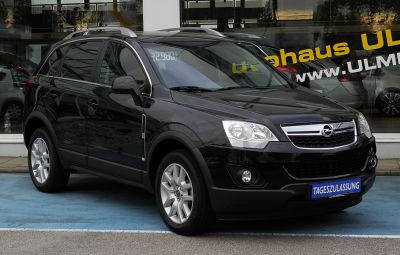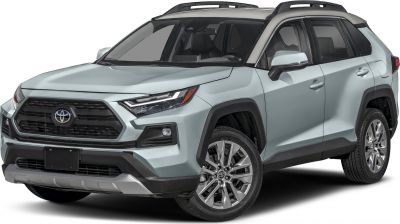 2006 Toyota FJ Cruiser Dimensions, Size & Specs
2006 Toyota FJ Cruiser Dimensions, Size & SpecsMeasurements of the 2006 Toyota FJ Cruiser, engineered for optimal performance and comfort
| Dimensions | |
|---|---|
| Length: | 4671 mm183.9 in15.3 ft |
| Width: | 1894-1905 mm74.6-75.0 in6.2-6.3 ft |
| Height: | 1811-1830 mm71.3-72.0 in5.9-6.0 ft |
| Ground Clearance: | 221-244 mm8.7-9.6 in0.7-0.8 ft |
| Trunk Capacity: | 754-790 liter26.6-27.9 cu ft |
| Trunk Capacity (Max): | 1892 liter66.8 cu ft |
| Weight Specifications | |
| Curb Weight: | 1850-2095 kg4079-4619 lbs |
| Maximal permitted Weight: | 2418-2527 kg5331-5571 lbs |
| Tire Specifications | |
| Rims Sizes: | 17-inch rims:
|
| Tire Size: |
|
The Toyota FJ Cruiser, produced from 2006 to 2022, is a distinctive off-road vehicle and SUV renowned for its rugged design and capable performance. Combining retro styling cues with modern engineering, the FJ Cruiser offers a robust build ideally suited for adventurous drivers and off-road enthusiasts.
Dimension-wise, the FJ Cruiser measures approximately 4670 mm (183.9 inches) in length, with slight variations between 4670 and 4671 mm depending on the model year and trim. Its width ranges from about 1894 mm to 1905 mm (74.5 to 75 inches), providing a solid stance on the road and trail. The vehicle's height spans from 1811 mm up to 1830 mm (71.3 to 72 inches), granting a commanding presence and ample headroom inside.
Weighing between 1850 and 2095 kilograms (4,079 to 4,617 pounds) curb weight, the FJ Cruiser balances sturdy construction with manageable mass. The maximum gross vehicle weight is between 2418 and 2527 kilograms (5,332 to 5,570 pounds), reflecting its ability to handle cargo, passengers, and tough terrain.
Luggage capacity is one of the FJ Cruiser's practical features, offering between 754 and 790 liters (approximately 26.6 to 27.9 cubic feet) when the rear seats are upright. Folding the rear seats down expands the cargo space significantly to around 1892 liters (66.8 cubic feet), making it versatile for carrying gear on long trips.
The ride height and ground clearance are impressive at 221 to 244 mm (8.7 to 9.6 inches), vital for navigating rough trails and obstacles without compromising undercarriage protection. This clearance is paired with a robust wheel setup featuring 17-inch rims (7.5J x 17 ET15) and 265/70 R17 tires, emphasizing the vehicle's off-road readiness and traction capabilities.
Overall, the Toyota FJ Cruiser stands out as a capable, well-sized SUV that merges utility and style, catering to drivers seeking a reliable vehicle for both urban use and challenging off-road conditions.
Discover the standout features that make the 2006 Toyota FJ Cruiser a leader in its class
Have a question? Please check our knowledgebase first.
The Toyota FJ Cruiser, produced between 2006 and 2022, features an overall length ranging from 4670 to 4671 mm (183.9 to 183.94 inches), a width varying between 1894 and 1905 mm (74.53 to 75 inches), and a height ranging from 1811 to 1830 mm (71.3 to 72 inches). These dimensions give the FJ Cruiser its distinctive, rugged off-road SUV appearance, balancing a sizable footprint needed for stability and off-road capability with manageable size for everyday urban driving.
The Toyota FJ Cruiser offers a ground clearance ranging from 221 to 244 mm (8.7 to 9.6 inches). This elevated ride height is a major factor in the vehicle's off-road prowess, allowing it to easily clear obstacles such as rocks and uneven terrain without damaging the undercarriage. The significant ground clearance also contributes to better approach, departure, and break-over angles, which are essential for navigating steep inclines and rugged trails typically encountered in off-road driving.
The Toyota FJ Cruiser's curb weight varies between 1850 and 2095 kg (4,078 to 4,618 lbs), depending on specific trims, optional equipment, and market versions. This relatively heavyweight reflects its robust frame, off-road suspension components, and the inclusion of additional features such as four-wheel drive systems. The weight contributes to the vehicle's stability on rugged terrain but also impacts fuel economy and handling if driven purely on paved roads.
The FJ Cruiser offers a luggage capacity of between 754 and 790 liters (26.6 to 27.9 cubic feet) with the rear seats in their upright position, suitable for groceries, luggage, or camping gear. When the rear seats are folded down, the cargo space expands significantly to 1892 liters (66.8 cubic feet), allowing for the transport of bulkier items such as outdoor equipment or furniture. This flexible cargo capacity enhances the vehicle's versatility for both daily use and adventurous excursions.
The width of the Toyota FJ Cruiser ranges from 1894 to 1905 mm (74.53 to 75 inches). This relatively wide stance provides excellent stability when driving off-road or on rough surfaces. However, in urban environments or tight parking spaces, such width can pose challenges, requiring more careful maneuvering. Drivers should be aware of the vehicle’s width when navigating narrow streets or parking lots but can appreciate the added road presence and internal space that the width affords.
The Toyota FJ Cruiser, with a length of approximately 4670 mm (183.9 inches), a width near 1900 mm (75 inches), and a height up to 1830 mm (72 inches), generally fits into standard residential garages, which typically have a width of around 2438 mm (96 inches) and a height clearance of at least 2133 mm (84 inches). However, parking might be tight in narrower or smaller garages, especially considering door opening space and additional accessories like roof racks. It’s recommended to measure your garage dimensions precisely to ensure a comfortable fit.
Compared to its predecessor, the iconic Toyota Land Cruiser FJ40, the FJ Cruiser is larger in nearly all dimensions. The FJ40 had a length around 4380 mm (172.4 inches), a width near 1690 mm (66.5 inches), and a height of approximately 1855 mm (73 inches). The FJ Cruiser’s significantly greater length and width provide more interior space, increased cargo capacity, and modern comfort, while the similar height maintains an upright, rugged profile. These dimension changes reflect Toyota’s efforts to modernize the classic design while enhancing usability and daily comfort.
When compared to similar off-road SUVs like the Jeep Wrangler or Nissan Xterra, the Toyota FJ Cruiser is generally larger in length and width. For instance, the Jeep Wrangler typically measures around 4235 mm (167 inches) in length and 1880 mm (74 inches) in width, making the FJ Cruiser longer and slightly wider, offering increased interior space and cargo capacity. The FJ Cruiser’s height is comparable at roughly 1811-1830 mm (71.3-72 inches). This slightly larger footprint enhances off-road stability and interior comfort but may be a consideration for urban maneuverability.
The Toyota FJ Cruiser is equipped with 17-inch rims, typically sized 7.5J x 17 ET15, paired with 265/70 R17 tires. These tire and rim dimensions provide a good balance between ground contact area and off-road traction, enhancing grip on mud, sand, and rocky terrain. The relatively large tire diameter and rugged tire profile contribute to the vehicle’s ability to absorb bumps and maintain traction over uneven surfaces, which is crucial for an SUV designed with off-road performance in mind.
The maximum weight of the Toyota FJ Cruiser ranges from 2418 to 2527 kg (5,332 to 5,571 lbs) depending on the model variant. This figure represents the vehicle’s Gross Vehicle Weight Rating (GVWR), which includes the curb weight plus passengers, cargo, and any attachments. A higher maximum weight capacity enables the FJ Cruiser to carry heavier loads safely and improves its towing capability. This makes it suitable for hauling trailers, boats, or carrying substantial cargo, enhancing its function as a versatile off-road utility vehicle.
Discover similar sized cars.

| Production: | 2023-present |
|---|---|
| Model Year: | 2023 |
| Length: | 4668 mm183.8 in |
| Width: | 1922 mm75.7 in |
| Height: | 1795 mm70.7 in |

| Production: | 2021-2023 |
|---|---|
| Model Year: | 2021 |
| Length: | 4661 mm183.5 in |
| Width: | 1894 mm74.6 in |
| Height: | 1786 mm70.3 in |

| Production: | 2010-2016 |
|---|---|
| Model Year: | 2011 |
| Length: | 4575-4596 mm180.1-180.9 in |
| Width: | 1850 mm72.8 in |
| Height: | 1704-1761 mm67.1-69.3 in |

| Production: | 2021-present |
|---|---|
| Model Year: | 2021 |
| Length: | 4595-4615 mm180.9-181.7 in |
| Width: | 1854-1865 mm73.0-73.4 in |
| Height: | 1685-1742 mm66.3-68.6 in |

| Production: | 2018-2021 |
|---|---|
| Model Year: | 2019 |
| Length: | 4595-4610 mm180.9-181.5 in |
| Width: | 1854-1864 mm73.0-73.4 in |
| Height: | 1685-1742 mm66.3-68.6 in |

| Production: | 2006-2010 |
|---|---|
| Model Year: | 2006 |
| Length: | 4576 mm180.2 in |
| Width: | 2085 mm82.1 in |
| Height: | 1747 mm68.8 in |

| Production: | 2018-present |
|---|---|
| Model Year: | 2018 |
| Length: | 4585 mm180.5 in |
| Width: | 1866 mm73.5 in |
| Height: | 1774 mm69.8 in |

| Production: | 2014-present |
|---|---|
| Model Year: | 2018 |
| Length: | 4618 mm181.8 in |
| Width: | 1858 mm73.1 in |
| Height: | 1753 mm69.0 in |
